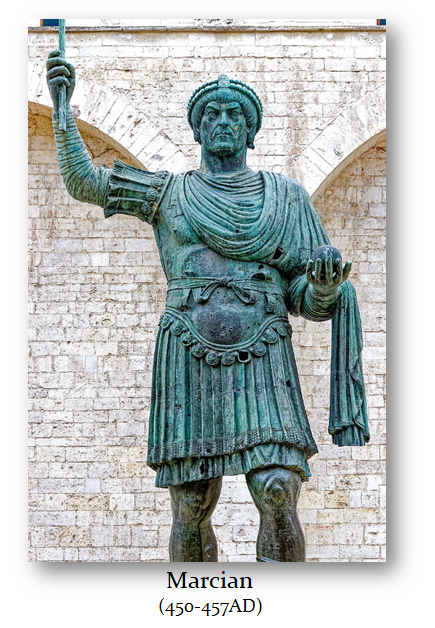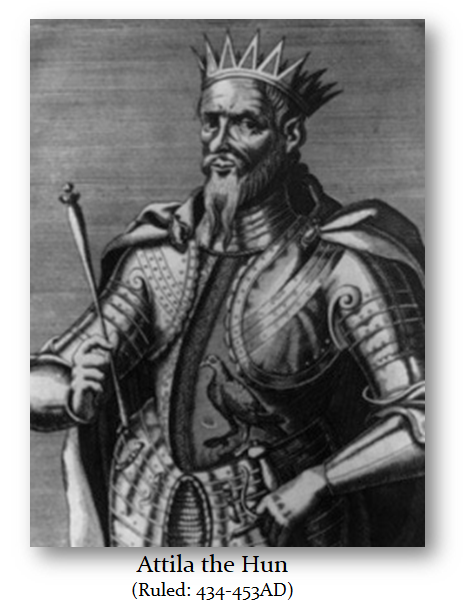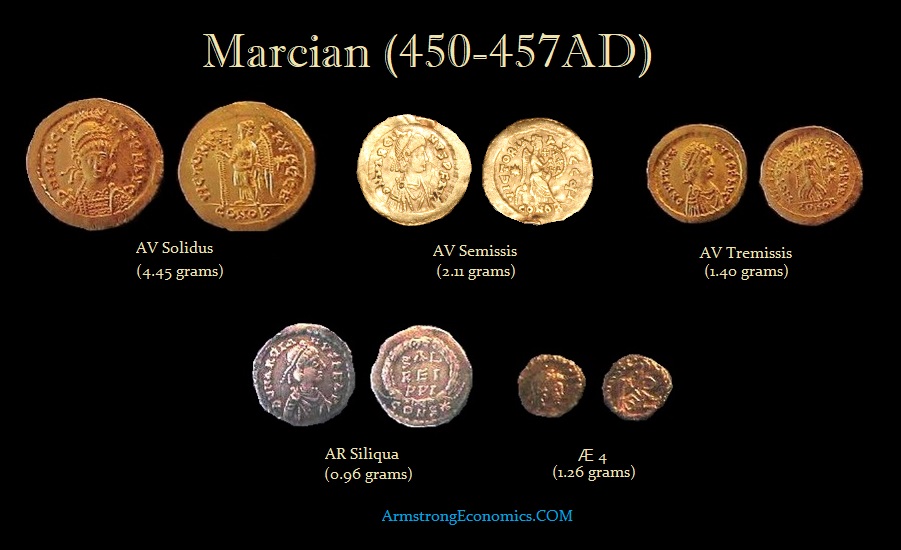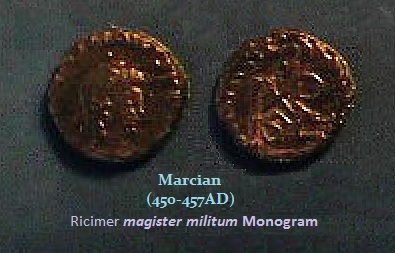Marcian
450-457 AD
Emperor in the East
Marcian was an accomplished soldier of humble origin who fought against the Persians. His father was also a soldier from the Balkans. Marcian became a widely respected tribune under Theodosius II. There are two versions of his eventual rise to the throne. One version claims that Theodosius had a vision in which he saw Marcian as his successor. The other version claims that following the death of Emperor Theodosius II, the right to select his successor fell to his wife, the Empress Pulcheria who selected Marcian to be raised to the rank of Augustus. In any event, Pulcheria may have carried out the wishes of her dead husband rather than rely upon her own choice. Whatever the case, Marcian and Pulcheria were married and Marcian succeeded to the throne of the Eastern division of the Roman Empire at Hebdomon on August 25th, 450 AD. The union between the two was purely political and Pulcheria took a vow of chastity.
Pulcheria’s influence was clear. One of the first acts Marcian was to execute Chrysaphius Zstommas, a longtime rival of Pulcheria. This proved to be one of the few bloody acts performed by Marcian during if reign. Marcian did prove to be a wise choice on the part of the Empress. He proved to be generous, wise, and noble and his reign ushered in a brief age of peace for the Eastern Roman Empire. Marcian ended the tribute that had been paid to Attila the Hun for not invading the Eastern regions of the Empire. Instead, Marcian said that he had no more gold for Attila – only iron.
Marcian became a fiscal reformer which proved to be very successful. By ending the gold payments to Attila the Hun, the savings to the treasury were significant. Marcian then combined this added revenue with a government reform process in which expenditures were reviewed and reduced. The net results of these economic reforms sparked a new age of growth and prosperity as the treasury of the Empire began to increase for the first time in decades. Back taxes were collected, and relief and repairs were instituted due to numerous natural disasters. Stability and economic sanity had at last been restored.
In 455 AD, Marcian refused to support Rome against the attack of the Vandal King Geiseric. This decision was very unpopular in the East. However, Marcian’s decision proved to be the correct one holding onto and rebuilding the resources of Constantinople.
In 451 AD, Marcian called the Fourth Ecumenical Council of Chalcedon within the Church. It was at this meeting that the political struggles for power within the Church also began to reflect what had taken place within the government. The patriarch of Constantinople pushed for more power and in effect was afforded virtual equal status with that of the Pope who still resided in Rome. This began the split of the Church between East and West.
Marcian died peacefully of natural causes in 457 AD at the age of 67. His wife Pulcheria died four years prior in 453 AD. With the death of Marcian, the house of Theodosius came to an end.
Monetary System
Mints: Antioch, Constantinople, Cyzicus, Heraclea, Milan, Nicomedia, Ravenna, Rome, Thessalonica
Obverse Legend:
D N MARCIANVS P F AVG
DENOMINATIONS
AU Solidus (4.50 grams)
AU Semissis (2.25 grams)
AU 1½ Scripulum (1.65 grams)
AU Tremissis (1.45 grams)
AR Miliarense (4.50 grams)
AR Siliqua (3.25 grams)
AE4









